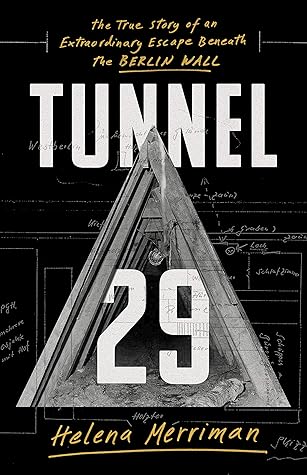More on this book
Community
Kindle Notes & Highlights
Read between
March 1 - March 3, 2023
‘Like all walls it was ambiguous, two-faced. What was inside it and what was outside it depended upon which side you were on.’ Ursula K. Le Guin, The Dispossessed
As Ulbricht put it: ‘It has to look democratic, but we have to hold everything in our hands.’
In 1848, Marx wrote that communism was the inevitable successor to capitalism.
If you’re looking for the moment the Cold War began, this was it. East and West Germany were now two separate countries with two irreconcilable ideologies: capitalism and communism. That year, West Germany was officially created, its occupying powers – the US, Britain and France – introducing a Western model of democracy, with free elections, free media and private ownership. Six months later, the Soviets declared the creation of the German Democratic Republic (GDR); a communist one-party system with a state-run economy under Soviet control.
If communism is East Germany’s new religion, then the school is its church, its pupil-congregation sitting in pews, learning at the feet of priest-teachers who often have a stronger influence on their lives than their parents. Six days a week, children are in the care of its party-appointed teachers, right from kindergarten where two-year-olds are taught the principles of socialism through communal potty breaks.
There’s an old East German joke: why do Stasi officers make such good taxi drivers? Because you get in the car and they already know your name and where you live.
By 1961, East Germany has lost three million people – around a fifth of its population. That year, each month, the numbers increase: in June, 20,000 leave; 30,000 in July. Soon, the deluge of people leaving becomes so great that a new word is coined to describe it: torschlusspanik – ‘the rush to get out before the door slams shut’.
Despite the mass of informants in Berlin, the spy capital of the world, no one in the West (not even the West Germans) knew that East Germany was about to build the barrier. It was one of the biggest intelligence failures of the Cold War.
But it is unique in one respect: most walls in history have been built to keep enemies out. This is one of the only walls built to keep people in.
many described West Berlin as an ‘island of freedom in a Communist sea’.
‘the highest power of television journalism is not in the transmission of information but in the transmission of experience’.
To escape through a tunnel is as risky as to build one. What lies ahead is unknown. The couriers were strangers. The rendezvous could have been a trap. Death was not the greatest danger. Prison camps can be worse. These are ordinary people, not trained or accustomed to risk. What must they be leaving to risk this?
For, if the Wall symbolises “the failure of Communism,” the tunnel symbolises man’s incessant drive for freedom.’
And it sinks in that what they’re witnessing is the most terrifying thing they’ve ever seen, the loss of the one thing that was keeping people loyal: fear.
‘There is one thing they all have in common,’ he says. Holding the shoes in his hands, he continues: ‘Wherever there’s a wall, people will try to get over it.’ Then he laughs. ‘Or under it.’


